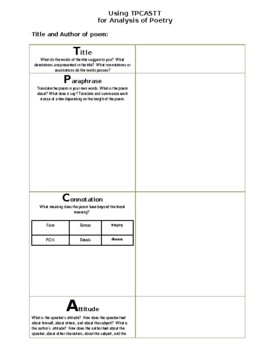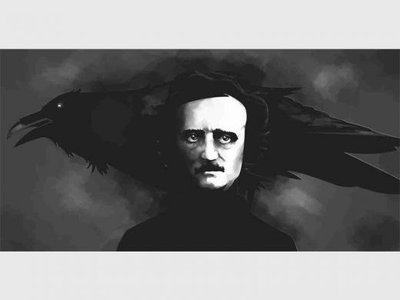The Raven is a narrative poem written by Edgar Allan Poe in 1845. It tells the story of a young man who is visited by a raven, a large black bird that speaks only the word "Nevermore." The raven's presence and the repetition of this word drive the narrator to madness as he tries to understand the bird's message and its significance.
Poe's use of language in The Raven is particularly noteworthy. He employs a number of literary devices, such as alliteration and assonance, to create a sense of musicality and rhythm in the poem. This contributes to the sense of eeriness and otherworldliness that pervades the poem.
One way to analyze The Raven is through the TPCASTT method, which stands for title, paraphrase, connotation, attitude, shift, title, and theme.
Title: The title of the poem, "The Raven," immediately sets the tone and establishes the central image of the poem. The word "raven" suggests mystery and darkness, as ravens are often associated with death and the supernatural.
Paraphrase: The poem tells the story of a young man who is visited by a raven that speaks only the word "Nevermore." The narrator becomes increasingly obsessed with the bird and its message, trying to understand its significance and driving himself to madness in the process.
Connotation: The connotations of the words and phrases used in the poem contribute to its overall mood and atmosphere. For example, the word "desolate" suggests loneliness and isolation, while the phrase "midnight dreary" evokes a sense of gloom and despair.
Attitude: The narrator's attitude towards the raven is one of fascination and fear. He is drawn to the bird and its strange behavior, but at the same time he is deeply disturbed by its presence and the message it seems to be conveying.
Shift: The poem undergoes a shift in tone towards the end, as the narrator becomes more and more distressed and distressed by the raven's presence. This shift serves to heighten the sense of tension and unease that pervades the poem.
Title: The title of the poem, "The Raven," is significant in that it helps to establish the central image and theme of the poem. The raven serves as a symbol of the narrator's own despair and madness, as well as a representation of the unknown and the supernatural.
Theme: The theme of The Raven is the destructive power of grief and loss. The narrator's obsession with the raven and its message is fueled by his own feelings of sorrow and loneliness, and his descent into madness ultimately serves as a metaphor for the way in which grief can consume and destroy us.
Overall, The Raven is a powerful and haunting poem that uses language and imagery to explore themes of grief, loss, and the destructive power of the unknown. Its use of literary devices such as alliteration and assonance, as well as its shifting tone, contribute to its overall atmosphere of eeriness and otherworldliness.






